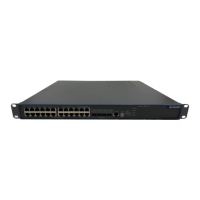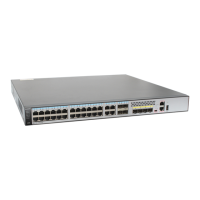Operation Manual – Routing Protocol
Quidway S5600 Series Ethernet Switches-Release 1510 Chapter 2 Static Route Configuration
Huawei Technologies Proprietary
2-1
Chapter 2 Static Route Configuration
2.1 Introduction to Static Route
2.1.1 Static Route
Static routes are special routes. They are manually configured by the administrator. By
configuring static routes, you can build an interconnecting network. The problem for
such configuration is when a fault occurs on the network, a static route cannot change
automatically to steer away from the fault point without the help of the administrator.
In a relatively simple network, you only need to configure static routes to make routers
work normally. Proper configuration and usage of static routes can improve network
performance and ensure sufficient bandwidth for important applications.
Static routes are divided into three types:
z Reachable route: normal route. If a static route to a destination is of this type, the
IP packets destined for this destination will be forwarded to the next hop. It is the
most common type of static routes.
z Unreachable route: route with ""reject" attribute". If a static route to a destination
has the "reject" attribute, all the IP packets destined for this destination will be
discarded, and the source hosts will be informed of the unreachability of the
destination.
z Blackhole route: route with “blackhole” attribute. If a static route destined for a
destination has the “blackhole” attribute, the outgoing interface of this route is the
Null 0 interface regardless of the next hop address, and all the IP packets
addressed to this destination will be dropped without notifying the source hosts.
The attributes "reject" and "blackhole" are usually used to limit the range of the
destinations this router can reach, and help troubleshoot the network.
2.1.2 Default Route
A default route is a special route. You can manually configure a default route by using a
static route. Some dynamic routing protocols, such as OSPF, can automatically
generate a default route.
Simply put, a default route is a route used only when no matching entry is found in the
routing table. That is, the default route is used only when there is no proper route. In a
routing table, both the destination address and mask of the default route are 0.0.0.0.
You can use the display ip routing-table command to view whether the default route
has been set. If the destination address of a packet does not match any entry in the
routing table, the router will select the default route for the packet; in this case, if there is
no default route, the packet will be discarded, and an Internet control message protocol

